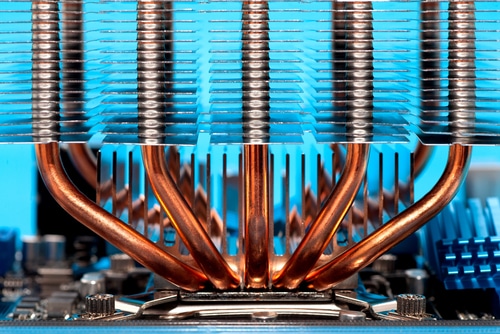Researchers at the University of Illinois at Urbana-Champaign (UIUC) and the University of California, Berkeley (UC Berkeley) have developed an invention that could cool down electronics with staggering efficiency and enable a 740 percent increase in power per unit, as reported by institutions on Thursday.
Tarek Gebrael, the lead author of the new research and a UIUC Ph.D. student in mechanical engineering, stated that current cooling solutions have three problems. “First, they can be expensive and difficult to scale up,” he said.

Secondly, the traditional heat spreading approaches generally place the heat spreader and a heat sin on top of the electronic device. Unfortunately, “in many cases, most of the heat is generated underneath the electronic device.” This means that the heat is not brought where it’s needed mostly.
Third, heat spreaders can’t be installed directly on the surface of the electronics. They require a layer of “thermal interface material” to be placed between them to ensure good contact.
This innovation has the solution to all problems. all three of those problems.
They use copper as the main material, which is obviously inexpensive. Then they made the copper coating entirely “engulf” the device, said Gebrael—”covering the top, the bottom, and the sides… a conformal coating that covers all the exposed surfaces”. Finally, it doesn’t need a thermal interface material and a heat sink.
“In our study, we compared our coatings to standard heat sinking methods,” Gebrael said. “What we showed is that you can get very similar thermal performance, or even better performance, with the coatings compared to the heat sinks.”

Co-author Nenad Miljkovic, who is an associate professor of mechanical science & engineering at UIUC and Gebrael’s advisor, concluded by saying:” Tarek’s work in collaboration with the team at UC Berkeley has enabled us to use a non-siloed electro-thermo-mechanical technology development approach to develop a solution to a difficult problem for multiple industries.”
The study is published in Nature Electronics.


